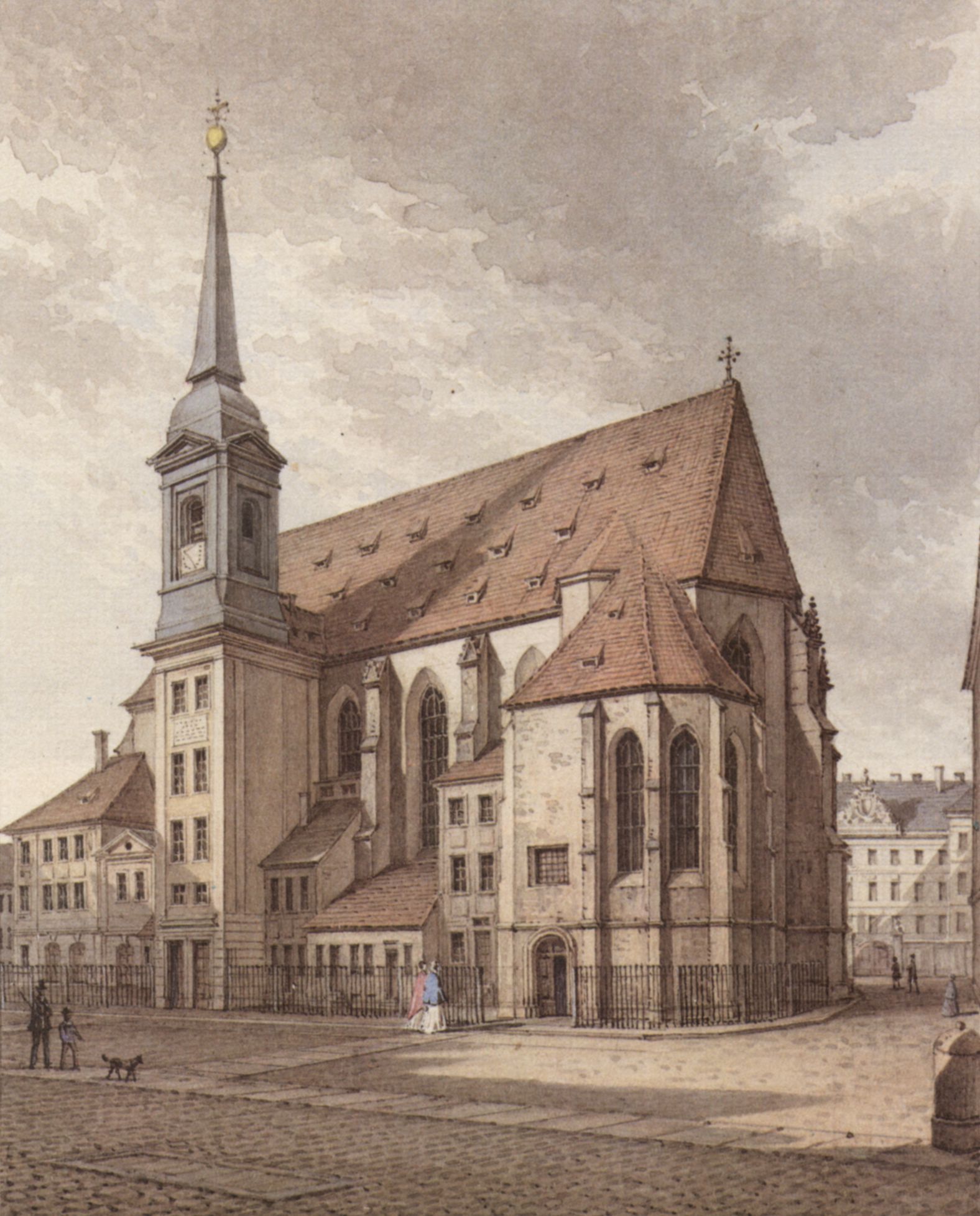Some time ago, blogger and 3D modeller Zoungy wrote a post about the possibility of having a "Historical 3D layer" in Google Earth, i.e. a separate layer including terrain and models of buildings from 50, 100, or even 200 years ago. In Germany, this would mean, for example, 1920s Berlin, or Potsdam before the the bombings. Just think how great cities like Frankfurt am Main or Nuremberg would look with their old buildings rebuilt in 3D.
In Berlin, for example, we would be able to see the old Potsdamer Platz, with its hotels and restaurants, or an impressive view of the Unter den Linden boulevard towards the Stadtschloss. A picture including the old excise wall (Gr. Aksizemauer) with its 18 gates. Maybe, even a reconstruction of the Berlin Fortess could also be possible.
In Google Earth, some German cities have historical imagery dating back from 1943, before being bombed. Big cities like Frankfurt am Main, Dresden, Köln, Lübeck, Nuremberg, Berlin, Stuttgart, Hamburg, Frankfurt an der Oder, Magdeburg, Leipzig, Göttingen, Koblenz, Freiburg, Hannover and Kiel are an example of this. While this pictures are not in HQ, modelers can use them as a reference for the location of old buildings. Former German cities in this category include Straßburg in the Alsace, Danzig in former West Prussia, and Breslau in Sliesia.
Berlin also has good quality imagery from March 1945, that covers Tiergarten, part of Moabit Potsdamer Platz, part of Mitte (without part of Friedrichstadt and the area around Gendarmenmarkt), , and Tempelhof airport, comprising a total area of 16.5 km2. Also, there is a 1950 archive covering all of Berlin and part of Potsdam.
Basically, there are three main problems regarding the historical imagery. First, the quality of the 1943 archive should be improved to have a clear view of the blocks and streets. Second, the imagery should match with the most recent pictures (usually, old pictures are displaced). Finally, the pictures should be colored to give the feeling of reality. Once those questions have been solved, we will be able to travel back in time and enjoy the beauty of the great German cities.
In Berlin, for example, we would be able to see the old Potsdamer Platz, with its hotels and restaurants, or an impressive view of the Unter den Linden boulevard towards the Stadtschloss. A picture including the old excise wall (Gr. Aksizemauer) with its 18 gates. Maybe, even a reconstruction of the Berlin Fortess could also be possible.
In Google Earth, some German cities have historical imagery dating back from 1943, before being bombed. Big cities like Frankfurt am Main, Dresden, Köln, Lübeck, Nuremberg, Berlin, Stuttgart, Hamburg, Frankfurt an der Oder, Magdeburg, Leipzig, Göttingen, Koblenz, Freiburg, Hannover and Kiel are an example of this. While this pictures are not in HQ, modelers can use them as a reference for the location of old buildings. Former German cities in this category include Straßburg in the Alsace, Danzig in former West Prussia, and Breslau in Sliesia.
Berlin also has good quality imagery from March 1945, that covers Tiergarten, part of Moabit Potsdamer Platz, part of Mitte (without part of Friedrichstadt and the area around Gendarmenmarkt), , and Tempelhof airport, comprising a total area of 16.5 km2. Also, there is a 1950 archive covering all of Berlin and part of Potsdam.
Basically, there are three main problems regarding the historical imagery. First, the quality of the 1943 archive should be improved to have a clear view of the blocks and streets. Second, the imagery should match with the most recent pictures (usually, old pictures are displaced). Finally, the pictures should be colored to give the feeling of reality. Once those questions have been solved, we will be able to travel back in time and enjoy the beauty of the great German cities.












